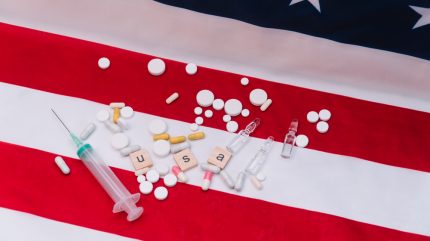
The US Food and Drug Administration (FDA) has created a new priority review voucher (PRV) framework to expedite the drug approval process for pharma companies prioritising US interests.
The new scheme, called the Commissioner’s National Priority Voucher (CNPV) programme, will shorten FDA review time for a new drug application from 10-12 months to up to two months. The expedited process will convene experts from FDA offices for a team-based review as opposed to the standard process, where many offices are involved, according to the FDA.

Discover B2B Marketing That Performs
Combine business intelligence and editorial excellence to reach engaged professionals across 36 leading media platforms.
Whilst sharing elements of existing PRV schemes, the criteria to meet the CNPV programme requirements are significantly different, casting uncertainty over the future of existing PRV legislation.
Pharma companies need to demonstrate US-centric potential for the drug to qualify for the new programme. The drug would need to address a health crisis in the country, produce an innovative cure for American patients, meet public health needs, or increase domestic drug manufacturing as a national security issue.
PRVs are currently handed out for pharma companies developing treatments for rare paediatric diseases, neglected tropical diseases, and material threat medical countermeasures. The PRV programme for rare paediatric diseases, signed into law in 2012, expired in late 2024 after it failed to make it into a US Congress funding package. This effectively pushed the programme into its ‘sunsetting phase’.
Experts gathered at the ongoing BIO International Convention in Boston, US, this week were reasonably confident the programme will be reauthorised in a legislative package before its expiry in September 2026. They added that the uncertainty surrounding it in the meantime, however, could be damaging to biotechs, investors, and rare disease researchers.

US Tariffs are shifting - will you react or anticipate?
Don’t let policy changes catch you off guard. Stay proactive with real-time data and expert analysis.
By GlobalDataCompanies are still being awarded pediatric rare disease and priority review designations; however, only those sponsors who received a rare pediatric disease designation before 20 December 2024 are eligible for a voucher for that drug, according to the FDA. In this backdrop, investors and scientists are feeling that uncertainty, said David Ridley, a health economist at Duke University, and one of the authors of a paper that introduced the concept of PRVs. Ridley said those affected are largely invisible to the general public and encouraged them to speak out about these challenges to raise awareness.
Travere Therapeutics vice-president Chris Porter said there is a “tremendous amount of bipartisan support”, and it does not cost money to the taxpayer. But there is a real cost to patients and the rare disease community if such programmes do not proceed during this period of uncertainty, he added.
US focus on FDA programmes
The new PRV programme is the latest move by the Trump administration to bolster its pharmaceutical armoury and incentivise the development of new drugs specifically for Americans. The creation of the CNPV programme offers hints as to where the current administration’s priorities lie in drug approval pathways. However, the FDA did confirm that the existing priority review programmes and PRV programmes will continue as normal.
“Using a common-sense approach, the national priority review program will allow companies to submit the lion’s share of the drug application before a clinical trial is complete so that we can reduce inefficiencies. The ultimate goal is to bring more cures and meaningful treatments to the American public,” said FDA Commissioner Marty Makary.
Experts have been concerned that this was an outcome of shifting priorities in the current government away from incentive-based programs for rare diseases. Moreover, an expanding focus on Medicaid cuts and a restructured funding approach for the National Institutes of Health (NIH) in the latest budget reconciliation bill – also called “the One Big Beautiful Act of 2025” – has meant the PRV program has not received as much attention.
The FDA plans to give out a limited number of these new CNPV vouchers this year. After a one-year pilot phase, the agency may decide to dish out more to those who align with US interests. CNPV vouchers will be valid through changes in a company’s ownership, though they must be used within two years of being received.
A key difference from the current PRV programmes is that CNPV vouchers will be non-transferable. A key incentive for those securing vouchers has been the ability to sell them to other pharma companies, with deals averaging around $100m in recent times, as per a GlobalData analysis. In 2015, AbbVie spent $350m for a voucher to United Therapeutics, a market high, but voucher prices have gone down as more have become available for sale.
Travere Therapeutics is one of the many companies that have successfully used the PRV programme. In 2015, a previous iteration of the company—Retrophin— sold a voucher it had received when the drug Cholbam (cholic acid) was approved to treat certain adult and paediatric patients with bile acid synthesis disorders, to Sanofi for $245m. Travere has since gone on to market Filspari, a drug for the IgA nephropathy, which is also under FDA review for focal segmental glomerulonephritis (FSGS). All of our work in IgA nephopathy and FSGS would not have been possible if the company hadn’t been able to sell the voucher to Sanofi, added Porter.





